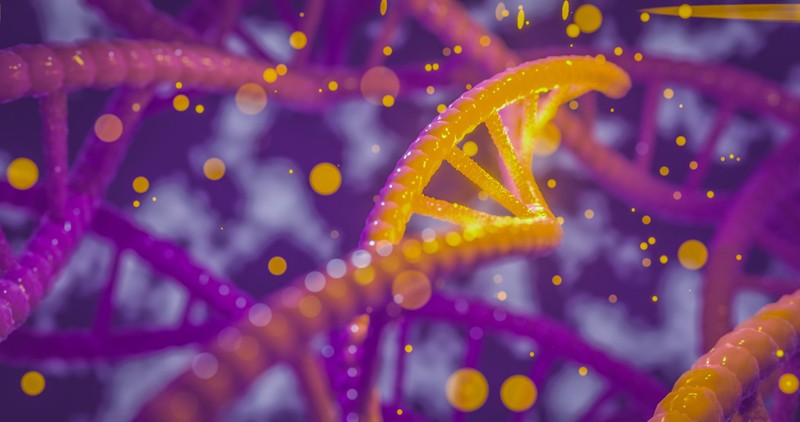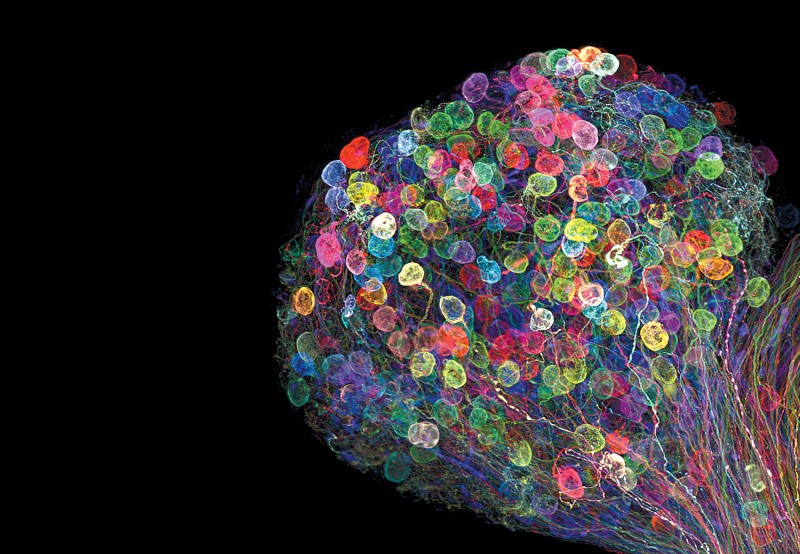每日外闻109
一项新的研究表明,烟碱样受体激活前额叶皮层中特定类型的中间神经元。这种关系的缺陷会引起类似于精神分裂症的行为异常,尼古丁可以改善这种行为异常。
前额叶皮层(PFC)中的锥体神经元及其向边缘和中脑区域的下行输入调节高阶信息处理、认知和情绪。锥体细胞执行的复杂计算需要对其活动进行严格控制。在这方面,PFC中的gaba能间神经元起着至关重要的作用,它为不同大脑结构中不同类别的神经元提供功能联系。精神分裂症患者往往表现出严重的社交和认知障碍,在一定程度上反映了PFC中锥体神经元活动的异常。精神分裂症患者的皮质系统究竟是如何以及为何受到干扰,目前尚不清楚,但GABAergic -interneuron对锥体细胞的控制已经发生了改变。
与普通人群相比,精神分裂症患者中吸烟者的比例要高得多,而且尼古丁能够减弱这种疾病的一些认知和情绪相关症状,这一事实早就显示出了尼古丁乙酰胆碱受体(nAChRs)在这一过程中的作用。但是nAChRs如何影响PFC中gaba能间神经元和锥体神经元之间复杂的相互作用,尤其是在精神分裂症的情况下,仍尚不清楚。在一期的《自然医学》杂志中,揭示了包含α5* nAChRs(其中星号表示完整的亚基组成未知)亚基的重要作用:在刺激PFC中特定类别的GABA能中间神经元(被称为血管活性肠多肽(VIP)间神经元)的活性中具有重要作用,它又可以反过来增强皮层网络活动。这些发现表明,α5* nAChRs功能的缺陷会导致前额叶功能低下-一种精神分裂症的典型特征,而旨在增强这些受体活性的新型药物可能要改善该疾病的某些最衰弱的方面。
Pyramidal neurons in the prefrontal cortex (PFC) and their descending inputs to limbic and midbrain regions regulate higher-order information processing, cognition and mood. The complex computations performed by pyramidal cells necessitate tight control over their activity. GABAergic interneurons in the PFC, which provide functional links between different classes of neurons in different brain structures, have a crucial role in this regard. Individuals with schizophrenia often demonstrate profound social and cognitive impairments that reflect, to some degree, abnormalities in the activity of pyramidal neurons in the PFC1. Precisely how and why cortical systems are perturbed in schizophrenia is unclear, but altered GABAergic-interneuron control over pyramidal cells has been implicated.
The fact that a much larger proportion of patients with schizophrenia are smokers as compared to the general population—and that nicotine can attenuate some of the cognitive and mood-related symptoms of the disorder—has long hinted at a role for nicotinic acetylcholine receptors (nAChRs) in this process as well2,3. But how nAChRs might influence the complex interactions between GABAergic interneurons and pyramidal neurons in the PFC, particularly in the context of schizophrenia, is largely unknown. In this issue of Nature Medicine, Koukouli et al.4 reveal a crucial role for nAChRs that contain the α5 subunit (α5* nAChRs; asterisk denotes that the complete subunit composition is unknown) in stimulating the activity of a particular class of GABAergic interneuron in the PFC, known as vasoactive intestinal polypeptide (VIP) interneurons, which in turn enhances cortical network activity. The findings suggest that deficits in the function of α5* nAChRs contribute to the hypofrontality that characterizes schizophrenia, and that novel medications designed to enhance the activity of these receptors might ameliorate some of the most debilitating aspects of the disorder.
See you tomorrow











